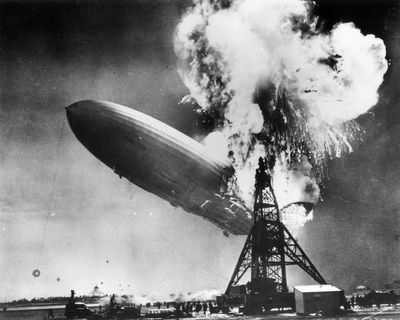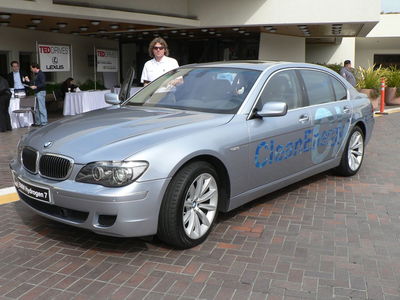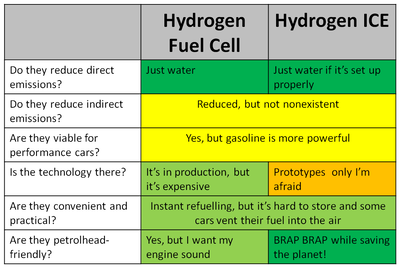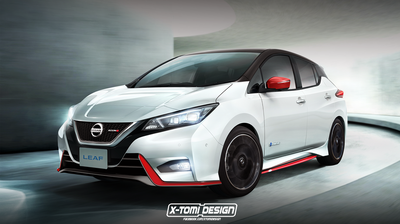#TheFutureOfMotoring Part 2: Hydrogen Cars
In the second part of this series on alternative fuels, we will look at hydrogen cars. I will discuss their pros and cons relative to electric and gasoline vehicles, and hopefully provide a balanced view of them.

In the second part of this series on alternative fuels, we will look at hydrogen cars. I will discuss their pros and cons relative to electric and gasoline vehicles, and hopefully provide a balanced view of them.
If you haven’t read the first blogpost about electric cars, I highly suggest you do so before you read this one.
The Operating Principle

Hydrogen fuel cell vehicles combine hydrogen with oxygen from the air to produce water vapour and release energy. This energy usually goes to electric motors, sometimes with a battery in between. It is also possible to build an internal-combustion engine running on hydrogen which works in a similar fashion to a gasoline engine.
The Advantages
Just like electric vehicles, hydrogen fuel cell vehicles do not emit carbon dioxide, so it doesn’t contribute to global warming or air pollution. Current hydrogen vehicles are also near-silent, as there are no production hydrogen internal-combustion engine cars yet.
Because hydrogen fuel cell vehicles use electric motors, they also benefit from the instant torque at 0 RPM. Of course, hydrogen internal-combustion cars act in a similar way to normal gasoline cars. Fuel cells can also be placed under the floor of a vehicle, just like batteries in electric cars.
Hydrogen cars of both varieties can have longer range than electric cars. One gram of hydrogen releases three times as much energy as a gram of gasoline. Refuelling a hydrogen car is much quicker than charging an electric car, so a hydrogen car is more suitable for long journeys.
Disadvantages
The main disadvantage of hydrogen cars is that hydrogen is extremely difficult to store. In order to get a good amount of hydrogen into a tank, it has to be compressed to around 700 bar (too much for even a 2JZ). Compressing the hydrogen requires energy, and it needs a heavy, reinforced tank to keep the hydrogen safe. The last thing you want is the tank leaking and releasing tens of thousands of litres of gaseous flammable hydrogen, or worse, rupturing explosively!

On the performance side of things, hydrogen cars need far more air than gasoline engines to combust the fuel. Whereas the stoichiometric (chemically ideal) air:fuel ratio for gasoline is around 14.3:1, it’s close to 38:1 for a hydrogen engine. However, at this ratio, hydrogen internal-combustion engines burn at a very high temperature which breaks the nitrogen triple-bonds in the air and forms nitrous oxides (yes, the stuff that was both responsible for Dieselgate and Brian’s floor-pan falling off) which are a harmful pollutant. In order to reduce such emissions to near-zero, the ratio must be doubled to nearly 80:1, which halves the power output compared to a gasoline engine (remember that hydrogen is a more energy-dense fuel than gasoline).
One way to get around this would be to run the fuel cell at maximum power most of the time and use electric motors to handle the times when high power is demanded. With a battery in between, this means the electric motors only need to
Another problem is that while hydrogen is extremely energy-dense per gram, it only has about 30% of the energy per litre of gasoline. This means that range isn’t quite as good as gasoline vehicles unless you use a huge tank.
Hydrogen vehicles (both internal-combustion and fuel-cell vehicles) aren’t nearly as efficient as electric, with efficiencies in the region of 30-50%. That’s only half as efficient as an electric vehicle, and roughly on par with efficient fossil-fuel vehicles. This means that a lot of the energy is wasted as exhaust heat, just like in normal petrol vehicles. Also, hydrogen fuel cells don’t tend to work very well in the cold.
Where does the hydrogen come from?
There are two main ways hydrogen is produced. The first involves reacting steam with methane (natural gas) to produce hydrogen and carbon dioxide in a two-part process:

This has two problems. Firstly, it releases carbon dioxide which is a greenhouse gas. And secondly, methane is a fossil fuel and therefore isn’t renewable. We wouldn’t be able to sustainably use this method because there is only so much natural gas in the Earth.
The second method involves splitting water through electrolysis. This releases hydrogen and oxygen, which happen to be the two reactants needed by the hydrogen car! Unfortunately, this uses a lot of electricity, and until it is 100% renewably generated, there will be some indirect carbon dioxide emissions. Also, since as I mentioned earlier hydrogen cars are rather inefficient, a large amount of electricity is wasted in the conversion to hydrogen and back again.
Basically hydrogen is just another way of storing energy that’s more convenient to refill than a battery, but it loses a lot of energy in the process. Imagine if you charged up your phone only to find it was only on 40% because the rest had been wasted on heating some air!
Existing hydrogen cars
Right now, the only hydrogen fuel-cell car you can actually buy is the Toyota Mirai shown as the cover picture. It is available in California, Japan, parts of Europe and the UAE. Nearly 3000 have been sold. Unfortunately, it isn’t great value, costing nearly US $60,000 or 60,000 Euros, which is a lot for a medium-sized saloon with a fairly-standard 152 horsepower. Official range is 312 miles which rivals a Tesla without the excessive weight of the battery. We’ll still W20 swap it though, because anything’s better with a W20.
Also available are the Honda Clarity and Hyundai Tucson FCEV, although these are for leasing only, and again only in a few locations. Some public buses have successfully used hydrogen fuel cells.
On the internal-combustion front, a few prototypes do exist. The BMW Hydrogen 7 was a modified E65 760Li which was capable of over 180mph from its 6-litre V12. However, it got 5 mpg (when you allow for the density difference, this is compareable to 15mpg in a gasoline car), and because the hydrogen in the giant 170-litre tank would heat up and boil, it had to safely vent pressure, giving the side effect of the tank emptying itself within 2 weeks even if the car wasn’t driven.

Mazda has developed Wankel rotary engines that burn hydrogen, as showcased in the RX-8 Hydrogen RE prototype. It can run on both hydrogen and gasoline, although horsepower reduces to a rather pathetic 109PS when running on the green stuff. It is street legal and was leased to other companies, but it isn’t really a production car.
Aston Martin have also gotten into the game with a dual-fuel Rapide S race car. The car could use the fuels individually or use both hydrogen and gasoline at the same time. It became the first hydrogen vehicle to finish the Nurburgring 24 Hours

Conclusion
So, the big question is this: Are hydrogen cars a viable method for the future? Unfortunately, I personally doubt it. They are nowhere near efficient enough, and the infrastructure isn’t there. It would be far more efficient to use the electricity directly rather than turning into hydrogen and back again. However, they might make for interesting racecars since they can be fuelled quickly (as opposed to Formula E which requires a car-swap mid-race).
And the final table:

I hope you enjoyed reading this and learning about a potential future fuel. Up next for Part 3, I’ll have a look at biofuel engines, how they can improve performance and whether they’re as eco-friendly as they seem. Until the, goodnight :D.














Comments
Hydrogen ice’s would be my dream future..
Thank you haha. You’re right on most points, although you didn’t consider nano aluminum, it’s essentially gasoline, non combustable, extremely efficient, and could potentially work on preexisting gas cars. If you don’t believe me I could send you a link if you want.
Chemistry class intensifies
I’ll stick to petrol
i bet terrorists and north koreans would modifiy it to blow up like an hydrogen bomb
or maybe a guy who put too much boost
It doesn’t work like that. In order to start hydrogen fusion (as opposed to regular burning), you need extreme temperatures and pressures which you’d only create with a “regular” nuclear fission bomb.
Petrol for now unless this one becomes a full success
No
Enter your comment…
EV for ever and ever
EV for EVer and EVer
Dude, you do realize this mentions fuel cells as well, which are used on EVs right?
My father in law has a Kamala kit car that he is in the middle of converting to hydrogen power. Will be a beast when it’s done 👌
Pagination